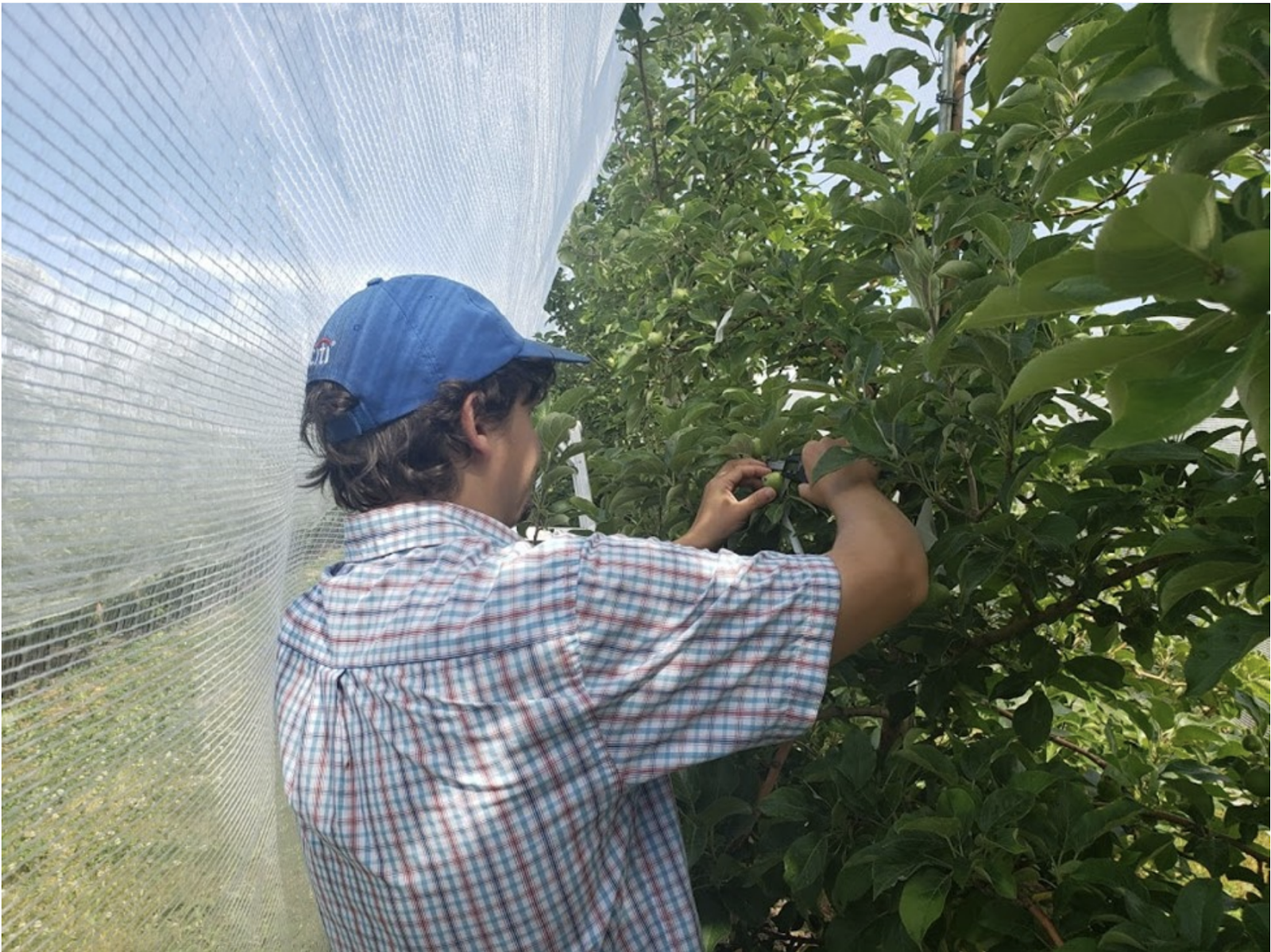Precision Apple Thinning with Computer-Based Plant Growth Models
A new bloom thinning model, developed by Virginia Tech researchers, might offer New York apple growers more precision and increased yields.

Tree Fruit Specialist Mike Basedow measuring Honeycrisp apples for the fruit growth model at an eastern New York orchard.
In eastern New York, there has recently been increasing interest in thinning apples earlier at bloom to improve return bloom in biennial varieties like Honeycrisp, and to begin the thinning process earlier in hard to thin varieties like Gala.
Growers sometimes use plant growth regulator-based products at bloom to begin their thinning programs. These bloom applications are generally not very efficacious, as these products work best in temperatures above 70º F, particularly in our region, which can be difficult to reach in eastern New York at bloom. There are other products that can be used at bloom; however, products have a very narrow application timing to get good results, which has limited their use. To help growers identify these timing windows, a bloom thinning model was developed by Virginia Tech researchers. The model is being widely adapted by growers in Washington State. The model’s use is still limited in New York, as our sometimes wet spring conditions restrict its use in some seasons. That, along with the narrow application window, led to a need for further field testing and demonstration in our region before growers could be confident bloom thinning with the model.
This season, eastern New York fruit specialists were awarded a grant through the Northern New York Agricultural Development Program to further study and demonstrate thinning with the bloom thinning model. Through this project, specialists hosted a bloom thinning webinar in March with Dr. Greg Peck, assistant professor of horticulture at Cornell, along with Dan Olmstead of NYSIPM, who is the coordinator of the Network for Environment and Weather Applications (NEWA). Peck helped develop the bloom thinning model, and the model is currently operated off the NEWA website.
Following the webinar, specialists set up Extension research and demonstration trials at two commercial orchards in eastern New York, and provided guidance to additional orchards on how to use the model. Specialists helped growers determine when to start the model, collected model inputs necessary to accurately run the model, and provided guidance and the rates and timings for the application of bloom thinning materials.
Following bloom thinning, specialists demonstrated how to use the fruit growth rate model, another orchard management tool available online at malusim.org, which helps growers determine when they have thinned enough fruit off of their trees. Specialists collected fruit growth measurements on the two across eastern New York, and worked closely with Cornell staff to interpret model recommendations for eastern New York growers. These data were also discussed weekly during nine online thinning webinars that took place for three overlapping portions of eastern New York this May and June.
While we still need to evaluate yield and fruit quality at the conclusion of the harvest season, fruit counts conducted in June at two sites indicate they still have slightly more fruit left on the trees than the crop load the grower was initially targeting. However, we expect some additional fruit to drop off between now and harvest.
Growers that have used the models have already expressed interest in continuing the use of these tools next season, and additional grant projects are being planned to make these tools more accessible to eastern New York apple growers.

